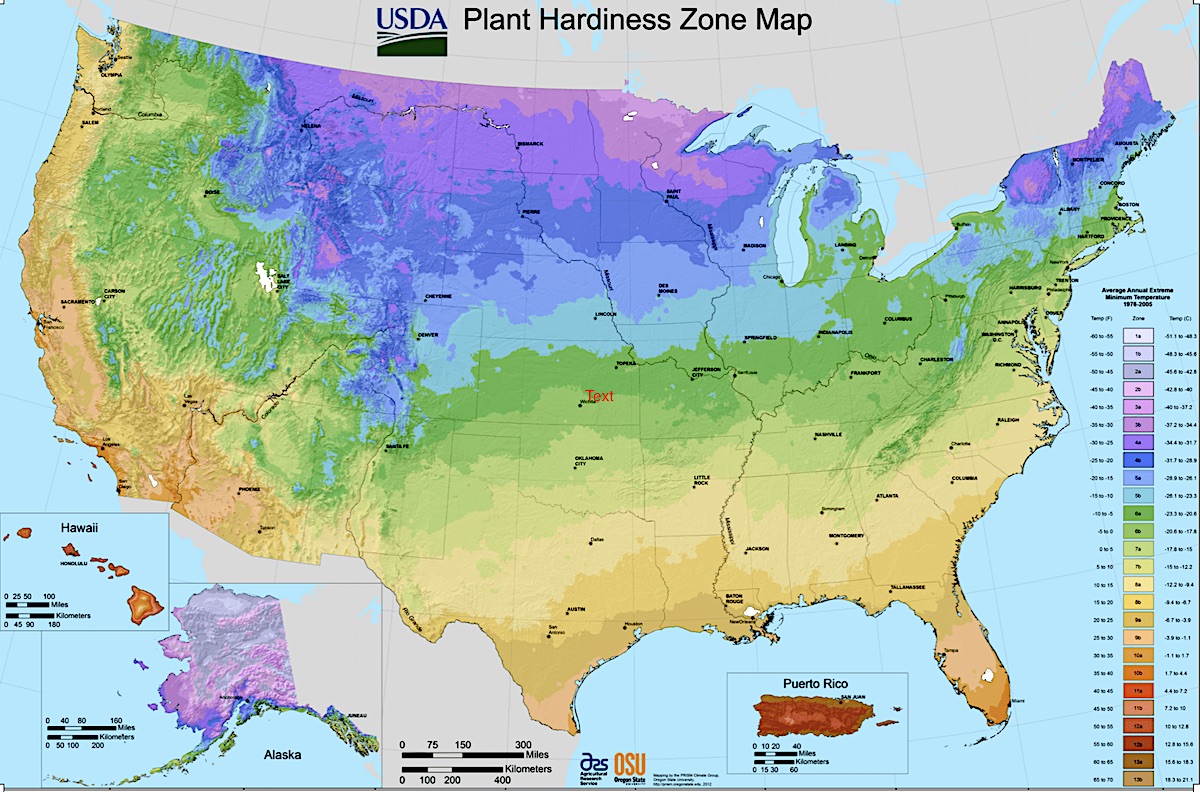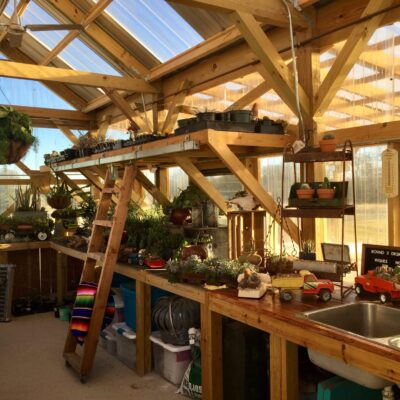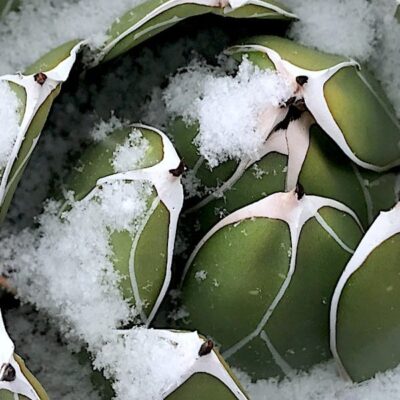Depending on where you live, here's how to get frost-tender South African succulents---like crassulas (jades), euphorbias, senecios and aloes---through a North American winter.
Coastal CA from the Bay Area south
Your climate is more similar to South Africa's than anywhere in North America. You banana-belters don't get frost, and winter humidity and rainfall are low, so simply make sure your succulents get good drainage during storms.
California, inland
Welcome to my own imperfect climate! At 1,500 feet in the foothills NE of San Diego, frosty nights follow rain. When temps are predicted to drop below 32 degrees F, I drape succulents with bed sheets, frost cloth, or floating row covers.
On YouTube, watch how I protect my own garden.
In a light frost, leaf tips may show some damage (frost burn). In a hard frost, temps stay below freezing for hours, and frost-tender plants collapse.
Learn more in my article: Frost and Succulents: What You Need to Know.
Northwest, Northeast, Midwest
Generally, the higher the elevation and/or latitude, the colder it gets. You'll need to overwinter all but hardy succulents indoors---perhaps in your basement---or within a climate-controlled shelter.
Here on my site, find:
- Four Ways to Overwinter Succulents
- Cold-Hardy Succulents for Northern Climates
- Showy Succulents for Snowy Climates
- How to Grow Succulents Indoors
- Products That Protect Succulents in Winter
Desert Southwest
Your climate is challenging for South African succulents due to intense summer sun, heat, and monsoon-like storms; and winter's frosty nights. Grow your favorites on a covered patio, and embrace (well, not literally) native succulents such as cacti, agaves, dasylirions and yuccas.
Southeast
Plants from arid regions don't like damp, humid climates, and certain desirable succulents (notably echeverias and aeoniums) can't handle summer rain. This excerpt from Designing with Succulents (2nd ed.) gives succulents suitable for moist, tropical areas.

USDA Hardiness Zone map
Above: The USDA Plant Hardiness Zone Map is a good basic guideline when it comes to temperature lows. But it's not much help when determining winter care for frost-tender succulents. It doesn't take into account rainfall and humidity, which even in milder zones make growing succulents challenging.
Overwintering
Overwintering Succulents How to keep succulents happy during the cold winter months Where you live makes a big difference when it comes to the well-being of your succulents in winter. Most varieties go dormant in winter and are frost-tender, meaning they can’t handle temps below 32 degrees F. Winter Conditions That Damage Succulents These common…
Cold Hardy Succulents: Details, Photos and Varieties
Cold-Hardy Succulents: Details, Photos & Varieties Looking for succulents that go below freezing? You’re in the right place! About cold-hardy succulents The common cold-hardy succulents shown here can handle northern winters, snow, rainstorms (if given excellent drainage) and summer dry spells. Most cold-hardy succulents are in the genera Sedum and Sempervivum. Sedum (stonecrop) Trailing varieties are lovely as…
The post Winter Care for Frost-Tender Succulents appeared first on Debra Lee Baldwin. Copyright © Debra Lee Baldwin.
from Debra Lee Baldwin https://ift.tt/374kBuU
via IFTTT



No hay comentarios:
Publicar un comentario